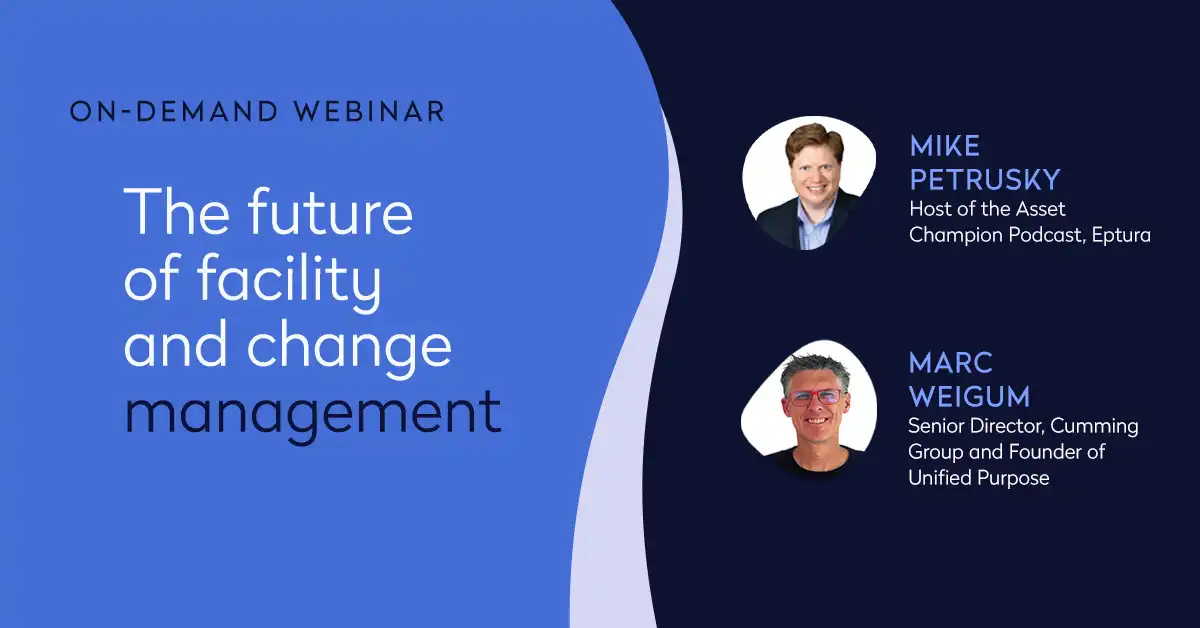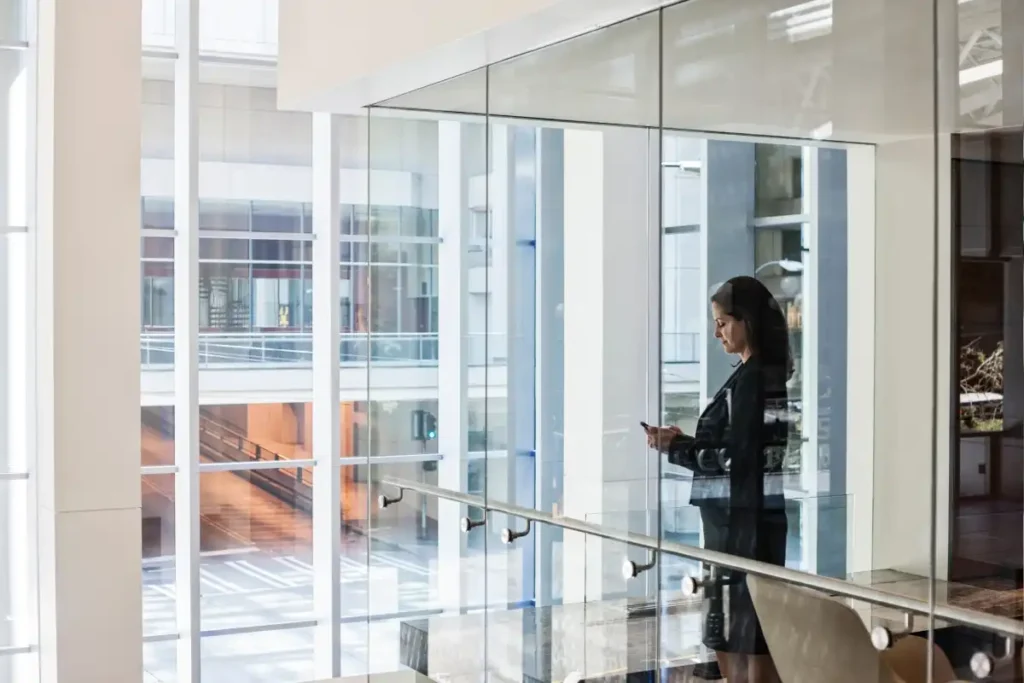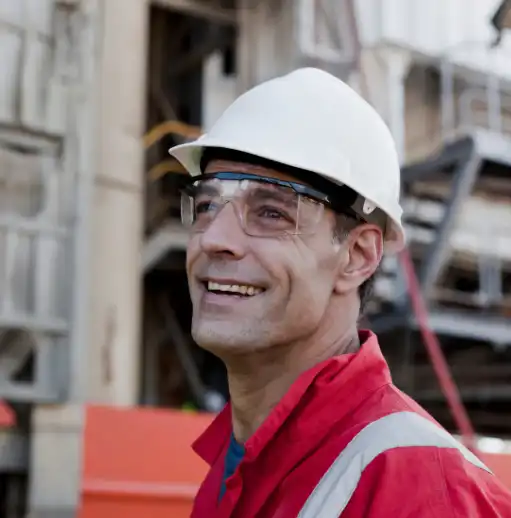
“The future of facility and change management” features a wide-ranging interview with host Mike Petrusky and guest Marc Weigum, Senior Director of Cumming Group and Founder of Unified Purpose. They cover the future of facility management and the importance of change management. They also look at the role of technology in the workplace, and the key elements for success in managing the built environment.
To help you get the most from the webinar, here’s an annotated recap with key takeaways, background, and further reading for a more complete understanding of the topics and their importance in modern asset and facility management.
Embrace change and leverage technology for the future of facility management
Weigum emphasizes the importance of understanding the different needs and wants when creating efficient and productive workspaces. In the end, everyone wants a solution, but they don’t all need the same one.
“I think it’s really a matter of really taking stock of what makes sense for your organization and where people want… where the organization wants to go, because not everybody wants to be where they have the ‘smartest’ building on the planet.”
Weigum also explains the impact of technologies like artificial intelligence and the Internet of Things (IoT). By helping facility managers accomplish more in less time through automating repetitive tasks, these technologies free up time for more strategic, creative, and innovative work.
What is the definition of “smart building” in facility management?
Th term “smart building” refers to a structure where stakeholders can leverage advanced technology and automation to optimize performance, enhance occupant comfort, and promote sustainability.
Smart buildings include interconnected systems that collect, analyze, and act on data from various sources, such as sensors, meters, and external data feeds. A data-driven approach enables facility managers to make informed decisions, improve operational efficiency, and reduce costs.
At the core of a smart building is the building automation system (BAS), which integrates and controls various subsystems like HVAC, lighting, security, and fire safety. By centralizing control, the BAS allows facility managers to monitor and manage these systems in real-time, ensuring optimal performance and quick response to any issues.
One of the key benefits of smart buildings is improvements in energy efficiency. Advanced sensors and analytics can track energy usage patterns, helping facility managers identify areas for improvement.
For instance, smart lighting systems can adjust brightness based on occupancy and natural light availability, while smart HVAC systems can optimize temperature settings to reduce energy consumption without compromising comfort.

Smart buildings help facility managers enhance occupant experience by making it possible to provide personalized environments. For example, smart workspaces can automatically adjust lighting, temperature, and even background music based on individual preferences, leading to increased productivity and satisfaction.
In terms of sustainability, smart buildings contribute significantly by reducing carbon footprint and promoting green practices. They can integrate renewable energy sources, optimize water usage, and even participate in smart grid initiatives, where buildings can interact with the power grid to balance energy supply and demand.
What are examples of certifications and standards for smart building practices?
There are many different smart building certificates, each with its own focus, standards, and certifying body, including:
LEED (Leadership in Energy and Environmental Design): Widely recognized certification that focuses on sustainability and energy efficiency. While not exclusively for smart buildings, many smart building features contribute to achieving LEED certification
BREEAM (Building Research Establishment Environmental Assessment Method): Leading sustainability assessment method for buildings that evaluates a building’s environmental, social, and economic sustainability performance, including aspects relevant to smart buildings
WELL Building Standard: Focuses on the health and well-being of building occupants. Smart building technologies that enhance indoor air quality, lighting, and comfort can contribute to achieving WELL certification
SmartScore: Developed by WiredScore, SmartScore is a certification specifically designed for smart buildings. It assesses a building’s technological capabilities, connectivity, and user experience, providing a comprehensive evaluation of its smart features
Green Star: Primarily used in Australia, Green Star is a sustainability rating system that evaluates a building’s environmental impact. Smart building technologies can help achieve higher Green Star ratings
Energy Star: A program by America’s Environmental Protection Agency, Energy Star certifies buildings that meet strict energy efficiency guidelines. Smart building technologies that optimize energy usage can contribute to Energy Star certification
ISO 41001:2018 – Facility Management: An international standard framework for effective facility management, including the integration of smart building technologies to enhance operational efficiency and sustainability.
These certifications help ensure that smart buildings meet high standards of sustainability, efficiency, and occupant well-being.
What is the connection between smart buildings and the Internet of Things (IoT)?
In the context of smart buildings, the Internet of Things (IoT) refers to the network of physical objects —such as sensors, actuators, and other devices — embedded within a building’s infrastructure, enabling these components to collect and exchange data. By integrating IoT, smart buildings can automate processes, optimize energy usage, enhance occupant comfort, and improve overall efficiency.
For example, IoT sensors can monitor temperature, humidity, and occupancy in real-time, adjusting HVAC systems to save energy and maintain a comfortable environment. Similarly, smart lighting systems can adapt to natural light levels and occupancy patterns to reduce electricity consumption.
The Industrial Internet of Things (IIoT) is a specialized subset of IoT tailored to industrial and manufacturing settings. While both IoT and IIoT share the fundamental principle of connecting devices to collect and analyze data, IIoT operates on a different scale and complexity. IIoT involves the integration of robust, industrial-grade sensors, actuators, and other devices into machinery and processes to monitor and control operations in real time.
Organizations implement IIoT to enhance operational efficiency, improve safety, minimize downtime, and enable predictive maintenance in industries such as manufacturing, oil and gas, and transportation.
A key difference between IoT in smart buildings and IIoT lies in their applications and the critical nature of the data they handle. In smart buildings, IoT devices typically focus on enhancing comfort, convenience, and energy efficiency, with relatively low risks associated with data delays or inaccuracies.
In contrast, IIoT devices often operate in harsh, high-stakes environments where real-time data processing and precision are crucial. For example, a slight delay or error in IIoT data could lead to equipment failure, production losses, or even safety hazards. Additionally, IIoT networks are usually more complex and expansive, requiring stringent security measures to protect sensitive industrial data.
Shift mindsets and approaches to embrace and facilitate change as “change agents”
Weigum explains the importance of being proactive, adopting a growth mindset, and being prepared. Facility management professionals need to be comfortable with change because often they are the ones implementing it.
“We are change agents. That is really at the core of what we do. We enable change.”
But change, he warns, must be strategic, which means making sure as a facility manager you’re making changes that align with the strategic goals of the company.
One of the challenges of change is that others might still prefer older ways of working. “We are dealing with people and change, and sometimes they’re not comfortable with it.”
A large part of the solution is developing empathetic communication and active listening.
What is a growth mindset?
A growth mindset is a belief that one’s abilities and intelligence can be developed through dedication and hard work. It’s the idea that talent and intelligence are not fixed traits, but rather starting points that can be cultivated over time.
People with a growth mindset embrace challenges, persist in the face of obstacles, and view failures as opportunities to learn and improve. They understand that effort and resilience are key to mastering new skills and achieving success.

In contrast, a fixed mindset is the belief that abilities and intelligence are inherent and cannot be changed. People with a fixed mindset often avoid challenges, give up easily when faced with difficulties, and see failures as evidence of their lack of ability.
Adopting a growth mindset can have significant benefits. It can enhance learning, foster resilience, and encourage a love for lifelong education. It can also improve relationships, as it encourages open communication, empathy, and a willingness to learn from others. In the workplace, a growth mindset can foster innovation, collaboration, and a culture of continuous improvement.
To cultivate a growth mindset, focus on the process rather than the outcome, embrace challenges, learn from failures, and celebrate effort and progress, not just success.
What is empathetic communication and active listening?
Empathetic communication is the ability to understand and share the feelings of another person, and to convey this understanding in a way that makes them feel heard and valued. It’s a crucial skill in both personal and professional settings, as it fosters trust, builds rapport, and promotes productive conversations.
To be an active listener:
- Show genuine interest: When a team member or tenant is explaining an issue, show you’re engaged by maintaining eye contact, nodding, and using verbal cues like “I understand” or “Go on.” For example, if a tenant is reporting a maintenance issue, you might say, “I see, so the leak is coming from the ceiling in the lobby?”
- Avoid interrupting: Let the speaker finish explaining the problem or situation before you respond, which is especially important when gathering details about a facility issue. For example, instead of jumping to conclusions mid-story, wait until they’ve finished speaking to ask clarifying questions.
- Reflect and paraphrase: Summarize the information you’ve received to confirm your understanding. This is crucial for ensuring you have the correct details before addressing a facility problem. For example, you might say, “So, you’re saying the air conditioning in the conference room has been making a loud noise since yesterday afternoon?”








